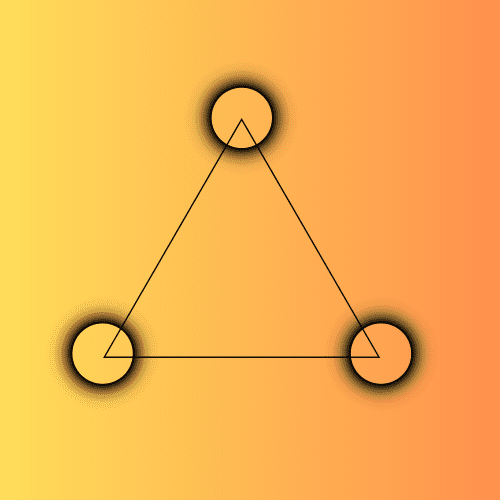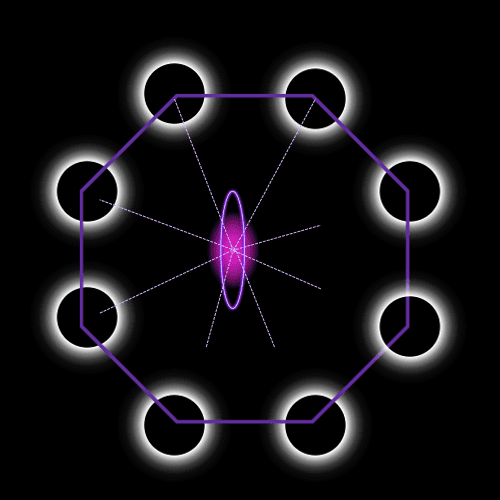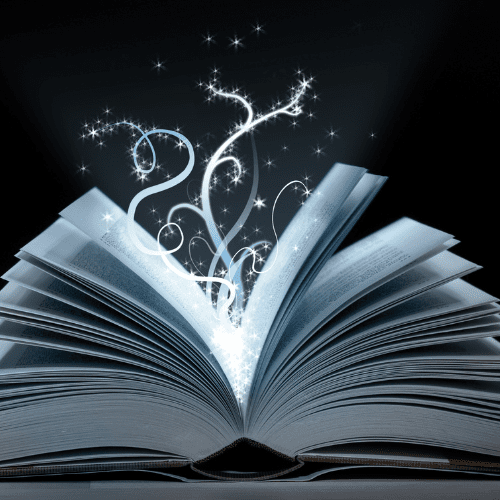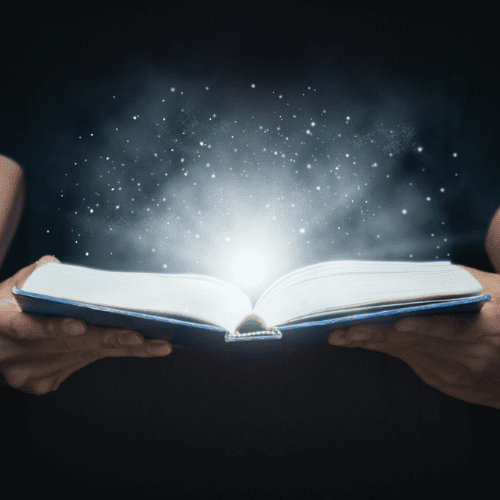Author: Chelsea B, Leading Contributor and Chief Editor of MK MediaVoice
Is Reading a Useful Skill in America’s Classrooms?
Do you care if your neighbor can read?
Does it matter if your cousin has low self-esteem or if your brother has low self-worth?
Do you care if your classmate is shy and she can both read and write but struggles to speak and articulate the meaning of her words?
Do any of these situations matter to you?
Problems of low-literacy and youth development are rooted in homes and classrooms of students who have followed cycles of endless struggles repeated by their parents striving to achieve the hypothetical American dream. The house with the white-picket fence in the safe neighborhood away from thugs. The best school in the suburbs away from gangs. The best county in the state away from crime. The best job that pays the bills and keeps the lights on. The best boss that will give a promotion to the best worker who sacrifices family for income.
But going to school, having a job, building a career and being successful are four separate routes for achieving the ideals in economic life. Often, the routes do not converge. You are either uneducated, living in poverty and a victim of circumstance, working in a city where money is scarce, cash is coveted and possessions are stolen or you are rich.
You are educated, a victor of choice, privileged and grateful, teaching at a school where money is in fluid abundance.
Inequalities exist in America. There are undeniable discrepancies between The Haves and The Have-Nots, welfare for blacks and golden thrones for whites, underpaid employees and tax-evading employers, but are these the only stories we are able to tell about people working and living in the USA?
One organization is telling new stories about people in America. Family Biz Builder (FBB), a nonprofit located in the deep Mississippi Delta, a place of unresolved economic and educational challenges, is on the path towards remediating the effects of low-literacy and enhancing career-readiness.
2024 Impact Goals for FBB:
Improving reading and math skills in 50 youth.
Developing character and life skills in 60 youth.
Improving ACT scores in 30 youth.
Empowering 50 parents to assist their children.
Click here to support FBB’s Mission: Help Build Foundational Skills through Education and Tennis!
This nonprofit desires to improve the learning statistics and success stories of student-readers living in Mississippi, emphasizing the importance of location and family. They seek to lower the barriers between teaching students how to read and teaching parents how to lead, not as parents leading their children but as wisdom-holders, working with students, guiding the children who live in their homes. There are times for discipline and delivering consequences. And, there are times for celebration and rewarding commitment.
Education never stops. Learning is an ageless endeavor but learning does not depend on location. Retention and recall do not happen inside of classrooms, nor inside any physical building. Learning is a process of discovery. It can be molded by instruction but it is strengthened by play. Learning begins with the person, influenced by the family and activated from within the individual, in his or her mind, as a natural intelligence yearning to ripen.
From Preschool to Undergraduate University: America is Reading on One Level
If students were not required by teachers to read, why would they want to read?
Is there an innate impulse that drives a person to read, without he or she being forced to do it?
Regardless of how the impulse arrives, some people love to read, others hate it.
Reading requires attention and concentration, but at what level are students reading?How often do they interact with books and what determines if they, as readers, understand the author’s intentions for writing the words inscribed on each page?
The primary goals of reading are threefold, but these goals are only relevant to the first level that communication can exist between author and reader: Elementary Reading.
The first goal of elementary reading is Reading for Information. At this level, the student knows something exists because the author said it was so.
The second goal of elementary reading is Reading for Understanding. This is when someone has more knowledge about a subject or an experience than the reader currently has and the author desires to communicate what that is and why it matters.
The third goal of elementary reading is Reading for Entertainment. This requires the least effort from readers. Its only requirement is active passion. If you feel the experience, then you have accomplished the goal.
Remove the stickiness from static, rudimentary reading skills. Ascend from the foundation of reading readiness to the buoyant columns of word mastery, build vocabulary and reach the apex, the highest point of skill refinement. Once fundamental skills are refined, then ascension increases and mature reading ability is established.
Thus, a new velocity, an undiscovered property of angular momentum can be accessed and applied.
Why does it matter if she can read?
Why does it matter if he can understand?
Your students are capable of translating symbols from paper to screen to object to substance and able to extract meaning from meaningless shapes, to create names for meaningless forms.
Mature readers understand the difference between the skills of reading and the art of conversation.
Beyond Rudimentary Reading: The Four Levels of Active Reading
If angular momentum is set in a different direction, what happens next?
Apply the power of compounding interest and wait for the infinite rates of return.
Each level of information builds upon the foundations of energy. The lowest is contained in the highest. To be syntopical readers, your students must first be informed by words and know when their mind feels informed.
Level 1: Elementary Reading aka Rudimentary Reading
- Age: Preschool to 12th grade
- Ability: To know the meaning of words and paragraphs in any type of printed material or digital screen, beyond books required by the instructor, applications in fields of law, government, economics and all other realms of industry.
- Limitations: Uninformed and unaware
Level 2: Inspectional Reading
Age: 12th grade to College Freshman
Ability: Speed reading. Acquire a superficial understanding by reading the whole book without worrying about what you don’t know or find confusing. Focused on what you do understand.
Limitations: Constrained by time, complexity and ambiguity
Level 3: Analytical Reading
Age: College Freshman to College Senior
Ability: Finding unity within a book. Mastering multiplicity, ordering a book’s parts as they are compared to the whole. Arguing with the author. Fast reading or slow reading in infinite intervals of time.
Limitations: Increased need for alertness, concentration and interaction with the book, restraining one’s natural tendency to daydream or fall asleep.
Age: College Senior to Post-Doctorate Professor
Ability: Converse with multiple authors at the same time. Enhanced appreciation for beauty and the liberal arts. Create a language or build algorithms.
Limitations: Maintaining objectivity. Knowing which books to choose. Knowing which book to read first, second or third. Establishing a standard for judging logic.
The elementary reader is the inspectional reader waiting for the clock to start. The analytical reader is the inspectional reader waiting for the clock to stop. The syntopical reader is the elementary reader telling the atom to stop at 60.
Beyond Books: From Reading Nouns and Verbs to Enumerating Names and Multiplying Primes
8 Octaves of Mathematical Literacy at Every Age of Industry
Reading is a reciprocal art between thinking and listening. Listening is a musical art between hearing and thinking.
Numbers order the logic of all forms of literature and expressions of emotion.
To go beyond books and written words is to reach a new dimension and higher levels for communicating information and sharing knowledge.
Listen to the debut album of your next student.
Album Title: “Callie Please Excuse My Dear Aunt Sally Pepper”
Algorithm: <CPEMDASP>
Octave 1: Count (<C>)
Verb: Count
Action: Establish the first structure
Enumerated Name: Zero (0)
Prime: 19
Neutron: Hydrogen

Octave 2: Parenthesize (P)
Verb: Parenthesize
Action: Establish the structure’s boundaries
Enumerated Name: Twenty (20)
Prime: 13
Proton: Helium

Octave 3: Exponentiate (E^)
Verb: Exponetiate
Action: Establish the structure’s magnitude
Enumerated Name: Twenty-one (21)
Prime: 7
Neutron: Lithium

Octave 4: Multiply (M*)
Verb: Multiply
Action:Establish the the structure’s reflections
Enumerated Name: Ninety-one (91)
Prime: 7 x 13
Proton: Beryllium

Octave 5: Divide (D/)
Verb: Divide
Action: Establish the structure’s holofractals
Enumerated Name: Five (5 / 1)
Prime: 5
Neutron: Boron

Octave 6: Add (A+)
Verb: Add
Action: Establish the structure’s analogy
Enumerated Name: One hundred and twenty-five (100 + 25)
Prime: 5 x 5 x 5
Proton: Carbon

Octave 7: Subtract (S-)
Verb: Subtract
Action: Establish the structure’s negations
Enumerated Name: Seventy-five (100 - 25 = 75)
Prime: 3 x 5 x 5
Neutron: Nitrogen

Octave 8: Permutate (>P::C<)
Verb: Permutate
Action: Rearrange the structure into binary triplets
Enumerated Name: Eight (8)
Prime: 2 x 2 x 2
Electron: Oxygen

Will this song remain as the 91st hottest song in America or will it climb to a position on the Top 20 list?
How can it happen?
Will it attract new listeners?
What song is currently the 19th hottest song on the planet?
Is it a beautiful work of art?
How does it compare to this?
Can a song exist without an album?
Can an album exist without a song?
Liberal Arts in Action: How to Be an Active Reader Instructed by Cosmic History
Book Title: “Cosmic History Chronicles Volume II: Book of the Avatar, Harmonic History, Cosmic Science and the Descent of the Divine - Time and Cosmos - History - The Relative Pole”
Example as an Elementary Reader
Words: History, Science, Energy
Terms:
- Cosmic History
- Relative History
- Absolute History
- Cosmic Science
- Big Bang
- Big RANG
- Electrons
- Partons
- Plasma Universe Model
- Ether
Separation of theology and physics
Exponential increase of information
Complexification of artificial life
What are we supposed to remember?
What would Buddha, Jesus and Muhammad say about the world if they were alive today?
What was the first thought of God?
Describe the universe from the point of view of extraterrestrial intelligence
Divine intervention, happening through humans
According to Cosmic Science, the first thought of God was: The formulaic equation of creative universal autogenesis engendering infinitely transformative multidimensional morphogenesis initiated as the simultaneous propulsion of two harmonic force fields of different frequencies setting off the universe of inexplicable order.
Questions:
Solutions:
Example as an Inspectional Reader
Simplicity
Religion
Spirituality
Atheism
Materialism
Humans and Animals
Like Humans and Animals
Greater than Humans and Animals
Energy
Measuring and counting
Light on, Light off
Object moving, object stopped
Big Bang Model vs Plasma Universe Model
Higgs Boson God Particle vs First Thought of God
Cesna Points and SUM Fields
Spherical and Cubical Carpins
Megacarpins, Neutral Miriads, Positive Miriads, Negative Miriads
6 Types of Cosmic Electricity
12 Electronic Lines of Force
Seven Radial Plasma
Sexagesimal, Base-60 Mathematics
Quantum Physics, Leptons and Quarks
Stages of the Quantified Parton vs Streams of Electrons
Cosmic Genetics, Atomic Physics and Multiple Dimensions
Complexity
Example as an Analytical Reader
Propositions
Kar Dual galaxies are galaxies with life. Mars Gamma galaxies are galaxies without life.
With new structures to inform and different knowledge to retain, human biology and human psychology can encompass a greater whole of unity and understanding.
- The Big RANG is infinitely repeatable. This RANG is sounded as a matrix of creation which affects human biology, starting from the interior parts as chakras, the nervous system, which receives plasma, connected to the same plasmas that were generated when God started thinking.
Arguments
- The Cosmic Science cosmology is affected by the perception of those who study it. Little information is provided in the digital and virtual realms to help simplify the complexities of this knowledge. Thus, this cosmology is sound but is incomplete. It requires more students to understand its information, to apply it to current technical lexicons and redesign modern technologies. To be complete, students will replicate its encoded structures to heal the ills of the material world.
- The Plasma Universe Model is true for those who believe in spirits and ether. The Big Bang Model is true for those who believe in protons and muons. Thus, the Plasma Universe Model is false for those who only believe in material mechanics and modern science. In addition, the Big Bang Model is both false and true for those who believe in spirits and an otherworldly science of the soul.
- Cosmic Science is a revelation of extraterrestrial intelligence. Movies and television shows depict apocalyptic stories of ETs intending to harm and destroy humanity. News media distorts the purity of other creatures and mocks the intelligence of strange creations.
- If new scripts were written and new movies were released that depicted scenarios of ETs helping humanity, would this change the narratives embedded in subconscious minds?
- Who are The Occupants of unidentified crafts?
Do The Occupants have families?
What if The Occupants only know how to love, how to give, how to share and it is the human who knows how to ignore, how to take and how to steal?
Who distorts the meaning of information, humans or others?
Example as a Syntopical Reader
Industries Requiring Reading
Those that require money to operate
Industries Requiring Math
Those that require time to calculate
Industries Requiring Algorithms
Those that require computers to simulate
Old Conversations
Scarcity of goods and resources
Time is money
An intelligence that can be artificial and unconscious
New Conversations
Abundance of goods and resources
Money is art
Artificial intelligence written, revised and commanded by spirits
Current Conversations
Simplifying Cosmic Science
Applying the Art of Active Reading
7
13
6
12
3:1::6:2::9:3
1 x 2 x 3 :: 1 + 2 + 3
Important Numbers with Names
Seven (7) volumes of the Cosmic History Chronicles
Thirteen (13) chapters in the Cosmic History Chronicles
Six (6) types of Cosmic Electricity
Twelve (12) lines of positive or negative electric charges of thought-force energy
A ratio of three (3) megacarpins on one (1) plane as a neutral miriad
A ratio of six (6) megacarpins on two (2) planes as a positive miriad
A ratio of nine (9) megacarpins on three (3) planes as a negative miriad
A ratio of six (6) as a product of primes and six (6) as a sum of primes quantifying the potency of base triplet sequences.
An Outro for the Liberal Artists and the Mathematically Literate
If you have read this far and made it to the end of the essay, then something has resonated with you. You are attracted (+) , repelled (-) or indifferent (+/-) to the information that has been shared.
If you are attracted (+), continue the conversation, help a young person learn how to read, attend and study with potential new friends at one of Mallory K’s Active Reading Workshops and share your intelligence on social media using the hashtags, #MyMotivationtoLearnIs, #10000Readers and #10KReaders.
If you are repelled (-) by this information, ask more questions and discover your truth.
If you are indifferent (-/+), continue to browse the internet and explore knowledge as you have done before.
All is a work of art. All art liberates energy. All is energy ordered by numbers. All is instructed by Intelligence. All is mathematically ordered by God.
You are 0 (+/-), 1 (^) and -1 (*).



Cosmic History Chronicles Volume II: Book of the Avatar, Harmonic History, Cosmic Science and the Descent of the Divine - Time and Cosmos - History - The Relative Pole by Jose Arguelles (Valum Votan) and Stephanie South (Red Queen)
How to Read a Book - The Classic Guide to Intelligent Reading by Mortimer J. Adler and Charles Van Doren
Join the Movement: #10KReaders
Continue the Conversation: Attend an Active Reading Workshop
Rank your choices. Let us know what books you prefer to read!
Check out other works of art authored by Chelsea B. as Artist: CCW.Kin163
Are you a literary, visual and/or hybrid artist?
Check out the MK Creator's Market.
Be inspired. Support other artists and make a purchase. Submit your creations!
